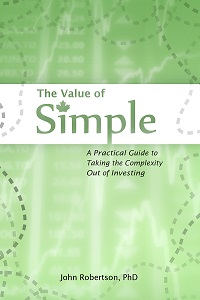Tater’s Takes – Chewing Gum
December 16th, 2011 by PotatoI just identified a major flaw with my job search strategy: I’m taking waaaay too long on my cover letters. I’ve been doing a big round-up of job postings towards the beginning of the month, then spending a few days each on my top few postings to get a submission in, only sometimes to find the competition closed before I could submit! “Drat,” said I, “what terrible luck.” Well, no, now I see that there were a bunch of postings that were only open for a few days by design, so I’ve got to retool my strategy to one of constant searching, constant applying, and to not fret so much about perfecting my cover letters.
Oh, and if you’re in the Toronto area and hiring, hey, here I am. I’m awesome at lots of stuff, not just science.
Anyway, it’s been a pretty slow couple of weeks. I’ve had a nasty cold that I just can’t seem to get over, going on almost two weeks now. The upside is that with the lack of appetite I’ve lost about 5 lbs — I just hope that wasn’t all muscle mass from lazing around.
Looks like chewing gum may help with concentration. I do like to eat snacks or chew gum while studying/writing… I should really focus more on the sugar-free gum for that.
A bunch of warnings from the Bank of Canada this week.
Even the banks are calling for mortgages to be further tightened, not that they actually expect the government to do anything. “I think the government will pause here and not do any tweaks, because they’re hoping that the housing market is slowing down on its own but not collapsing and they don’t want to push it over and make it go down rapidly,†Mr. Clark said.
Not a very in-depth report, but one of the first I’ve seen on Toronto news that was so bearish. In fact, I think the first I’ve ever seen on Toronto news where they didn’t cut from the latest bearish housing report to spend 5 minutes with a pumper. This is a naturally slow period for the housing market anyway, must be a good time to get out all the bad news.
There was some speculation around the net-o-sphere that this year would see the TFSA limit bumped with inflation; the CRA has just announced that it will remain at $5000 for 2012.
I’ve seen people get mad at really bizarre things, but here’s a weird one: an investor that didn’t buy a stock until 2009 is upset about the long-term returns, even though their returns from 2009-now have been fantastic. Also, a rather poor article for comparing returns without taking into account distributions. Consumer’s/enercare would have still under-performed the TSX, but it was at least a positive return including distributions.
Amazon makes a dick move against bricks-and-mortar stores by encouraging customers to go in, scan an item with their smartphone, then buy from Amazon (with a coupon). [HT: John Scalzi, worth reading his take too] I know that comparison shopping has long been the norm, and that many people will check out an item in a bricks & mortar store only to go home and order it online if the price is better. And I’m certainly not one to disparage being price-sensitive — it’s nice to support your local businesses, but you’ve gotta eat too [though for books in particular, I get a lot from the library]. So it was perhaps inevitable that comparison-shopping would evolve from trying to store things in memory or take notes to taking cell phone pictures and even shopping with your phone on one site while being in another business’ store. By creating a barcode reader sales app, Amazon was being three parts ingenious, business-savvy, and ahead of the curve, and just one small pinch of a dick. But then going out and encouraging people to do exactly that, with coupons? That’s evil genius territory.
Michael James looks at the volatility drag effect of owning a small subset of stocks (i.e.: a dividend portfolio) vs the whole index. Check out the comments section for a good (but long) discussion of sampling and where that volatility drag comes from. I was particularly interested in this one as I was starting to draft a post about whether you could sample the index and “make your own ETF” with even lower fees at a discount brokerage. I might still publish it, though now of course I’ll have to point out that it’s wrong…
Also check out some articles on a new fund facts disclosure for mutual funds. The big question is, how do we get everyday investors to appreciate the importance of fees? Percentages don’t seem to be doing it, and as Jonathan Chevreau pointed out in his article, converting a percentage to a cost per $1000 isn’t helping much. Michael James suggests another method with percentages, and in the comments there, I suggest using dollars, but not as “per $1000”, but per some kind of large-dollar-value standard portfolio over some reasonable life-time: e.g., “this fund will cost you $90,000 more over a standard investment period than a lower-cost equivalent.”
Happy last-minute shopping, everyone! (PS: for the person on your list who’s not much of an investor, did you know I have a book? ;)


 Questrade: use QPass 356624159378948
Questrade: use QPass 356624159378948 Passiv is a tool that can connect to your Questrade account and make it easier to track and rebalance your portfolio, including the ability to make one-click trades.
Passiv is a tool that can connect to your Questrade account and make it easier to track and rebalance your portfolio, including the ability to make one-click trades.